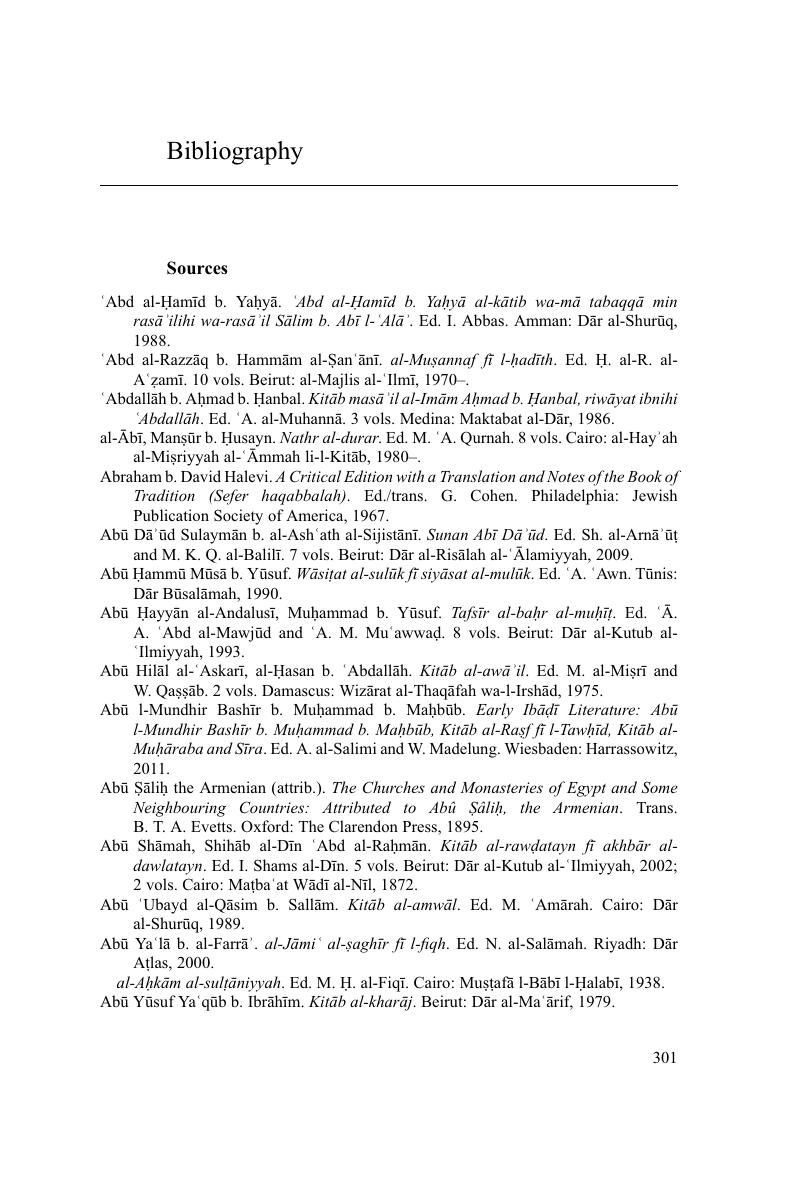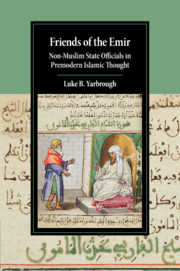Book contents
- Friends of the Emir
- Cambridge Studies in Islamic Civilization
- Friends of the Emir
- Copyright page
- Dedication
- Epigraph
- Contents
- Acknowledgments
- Note on the Text
- Abbreviations
- Glossary of Frequent Arabic Terms
- Part I Beginnings
- Part II Elaboration
- Part III Efflorescence and Comparisons
- Bibliography
- Index
- Other titles in the series
- References
Bibliography
Published online by Cambridge University Press: 04 June 2019
- Friends of the Emir
- Cambridge Studies in Islamic Civilization
- Friends of the Emir
- Copyright page
- Dedication
- Epigraph
- Contents
- Acknowledgments
- Note on the Text
- Abbreviations
- Glossary of Frequent Arabic Terms
- Part I Beginnings
- Part II Elaboration
- Part III Efflorescence and Comparisons
- Bibliography
- Index
- Other titles in the series
- References
Summary

- Type
- Chapter
- Information
- Friends of the EmirNon-Muslim State Officials in Premodern Islamic Thought, pp. 301 - 344Publisher: Cambridge University PressPrint publication year: 2019

